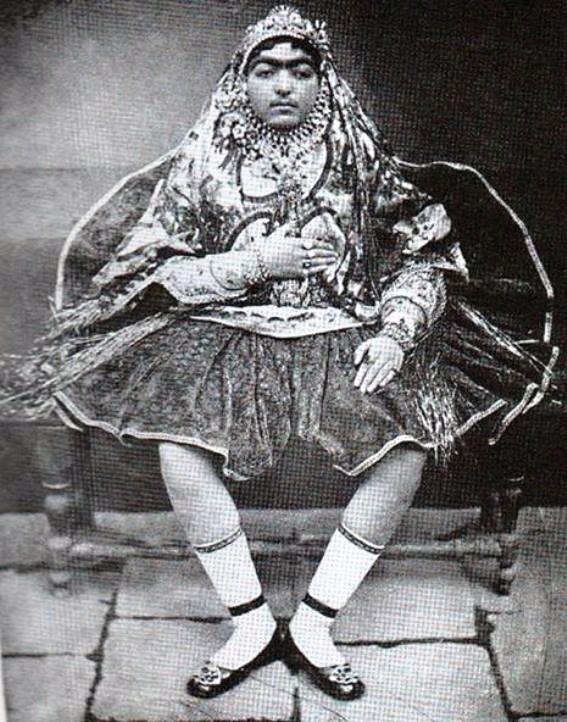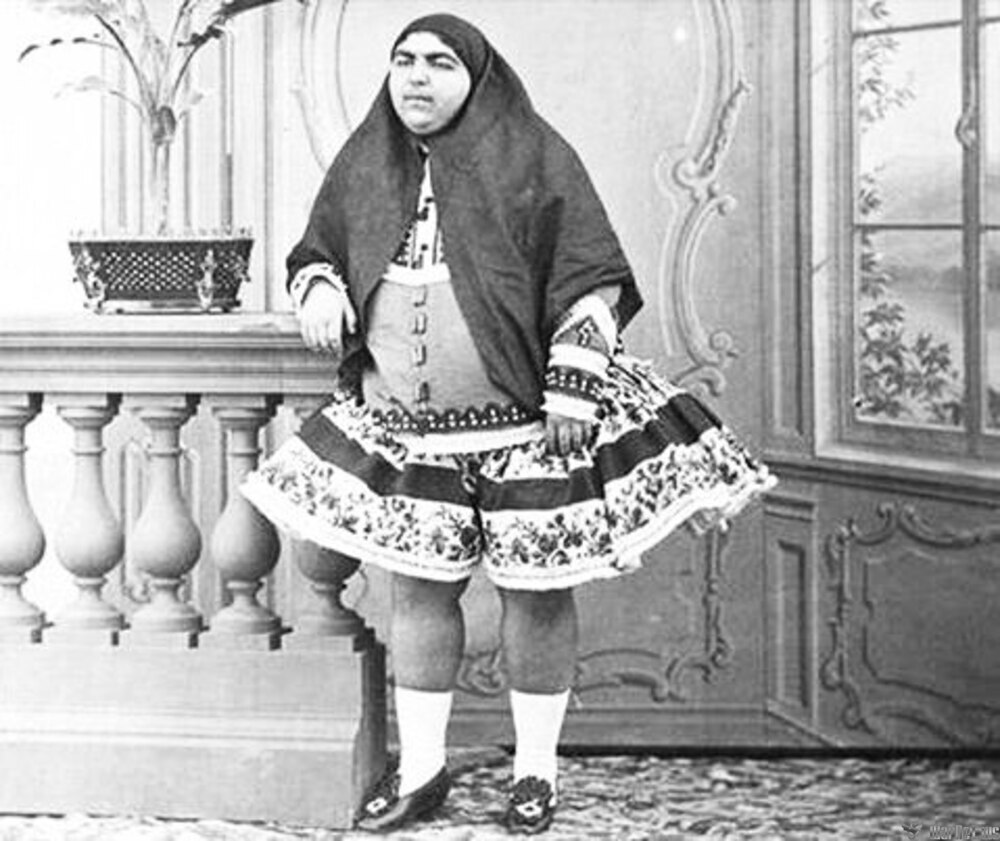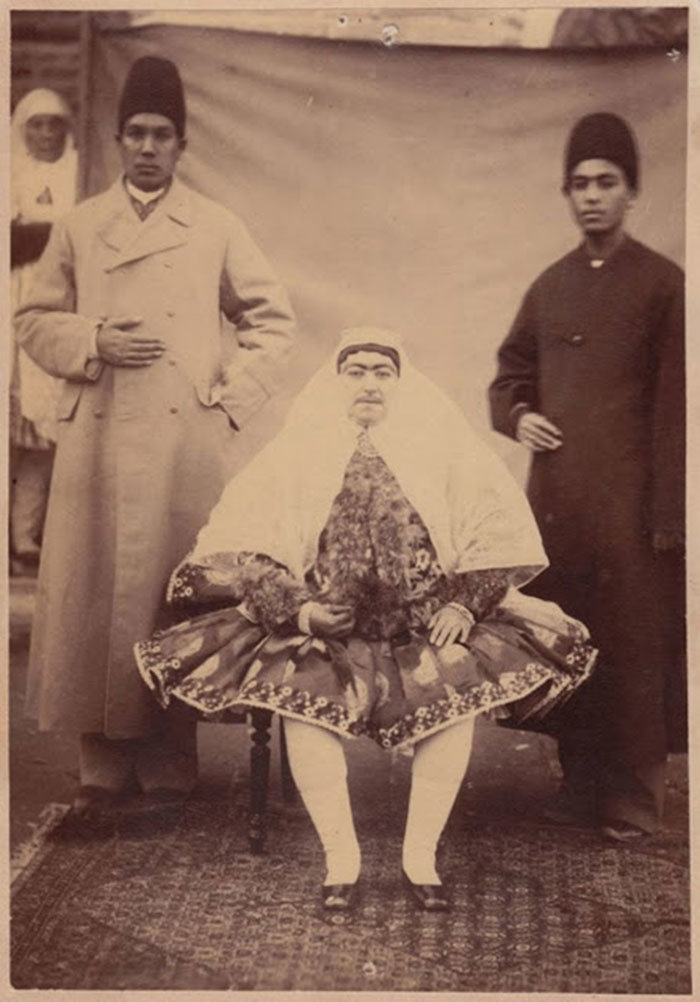Erkeklerin Aklını Başından Alan, 19. Yüzyılın Güzellik Sembolü İran Prensesi Qajar

History Daily Persian princess, King of persia, Iran pictures
Between 1785 and 1925, an Iranian family of Oghuz Turkish descent ruled Persia, now Iran, in what was called the Qajar Dynasty.Though the first ruler aimed to reunify Iran, over the course of the family's reign they experienced both significant gains and losses of land, losing control of large areas of the Caucasus and Central Asia as a result of the expansionist Russian Empire, which was.

Nasser adDin Shah Qajar. The Shah of Iran and photos of his harem. Or the harem? — Steemit
The Qajar Period. Before the 19th century Anglo-Iranian relations were sporadic. Periods of engagement alternated with decades of disengagement. After the death of Karīm Khan Zand (1193/1779) contacts between Britain and Iran diminished and were maintained with regularity only in the Persian Gulf as the center of government authority moved north.

Still searching who is the husband ? Princess Qajar was considered the ultimate symbol of
The subject of this paper, private life in the late Qajar period, has barely been touched upon, probably because it is a subject on which there is not much primary material. There are no comprehensive accounts of people's daily lives of any class or occupation. In this article an attempt is made to give an account of the daily domestic life and.

История человечества в фотографиях 11 Варнет
The Qajar dynasty ( Persian: دودمان قاجار; 1789-1925) [a] was an Iranian [1] dynasty founded by Mohammad Khan ( r. 1789-1797) of the Qoyunlu clan of the Turkoman [2] Qajar tribe.

Más Allá del Misterio la Princesa Qajair
Zahra Khanom or Taj al-Saltaneh (1884 - 25 January 1936; Persian: تاجالسلطنه) also known as Princess Qajar, was a princess of the Qajar dynasty, known as a feminist, a women's rights activist and a memoirist. She was the daughter of Naser al-Din Shah, the King of Persia from 1848 to May 1896.

WordPress Persian princess, Qajar dynasty, Persian beauties
Nearly a century after the fall of Iran's Qajar dynasty (which lasted from 1785 to 1925), and amidst the festivities of the two-week-long Iranian New Year (Norooz), a landmark exhibition at the.

Çirkin İran prensesi olarak fotoğraflar'da gördüğümüz ''kadının'' erkek olduğunu biliyor
The Qajar dynasty (also known as Ghajar or Kadjar) is a common term to describe Iran (then known as Persia) under the ruling Qajar royal family that ruled Iran from 1794 to 1925. In 1794, the Qajar family took full control of Iran as they had eliminated all their rivals, including Lotf 'Ali Khan, the last of the Zand dynasty, and had reasserted Persian sovereignty over the former Iranian.

Erkeklerin Aklını Başından Alan, 19. Yüzyılın Güzellik Sembolü İran Prensesi Qajar YouTube
This paper will consider a geographical text prepared by the Qajar court, the Mi'rat al-Buldan or "The Mirror of the Lands," as a critical source for Qajar imperial history, revealing methods for accessing and utilizing local networks of power in their state building projects. The Mi'rat al-Buldan project was undertaken by Nasir al-Din Shah in.

Persian Princess Qajar Dynasty The Beauty Symbol in 19th Century
A number of exhibitions in France and the US are now renewing that interest. 'The Rose Empire: Masterpieces of 19th-Century Persian Art', a large survey of painting and decorative arts, is about to open at the Louvre-Lens (28 March-23 July). 'The Prince and the Shah: Royal Portraits from Qajar Iran' at the Freer | Sackler brings.

Erkeklerin Aklını Başından Alan, 19. Yüzyılın Güzellik Sembolü İran Prensesi Qajar
Iranian Studies Everyday Life in Late Qajar Iran Published online by Cambridge University Press: 01 January 2022 Shireen Mahdavi Article Metrics Get access Cite Rights & Permissions Abstract The social history of Iran in general and that of the Qajar era in particular, has been little studied.

Uğruna 13 Erkeğin İntihar Ettiği Söylenen İran Prensesi Qajar ve Gerçekler
The Qajar Dynasty was an Iranian family of Oghuz Turkish descent that ruled Persia ( Iran) from 1785 to 1925. It was succeeded by the Pahlavi Dynasty (1925-1979), Iran's last monarchy.

Uğruna 13 Erkeğin İntihar Ettiği Söylenen İran Prensesi Qajar ve Gerçekler
Yüzyılın Güzellik Sembolü İran Prensesi: Qajar. Erkeklerin Aklını Başından Alan, 19. Yüzyılın Güzellik Sembolü İran Prensesi: Qajar Rinascita - Onedio Üyesi. 23.11.2018 - 18:52. Qajar'a aşık olanlar arasında 'Ey Taj' takma adını kullanan İranlı şair Aref Qazvini de vardı. 5. Zahra döneminin ilk feminist kadınları.

İran Şah'ının Eşine 145 Kişinin Aşık Olduğu ve 13 Kişinin Uğruna İntihar Ettiği İddiası
a fuller picture of Iran's rich and complicated past. The Women's Worlds in Qajar Iran (WWQI) project is an innovative resource at Harvard University that seeks to use digital and online technology to overcome the decades-long limitations that have to date circumscribed scholarship related to the Qajar period in Iran.

Women In Iran, Iranian Women, Chanel Frases, Qajar Dynasty, Persian Princess, Popular Instagram
viii. QAJAR PERIOD. In the century and a half that constituted the Qajar period (1786-1925), writing of history evolved from production of annalistic court chronicles and other traditional genres into the earliest experimentations in modern historiography. Aiming to fashion a new historical identity, Qajar historiography fused the pre-Islamic.

Persian Princess Qajar Dynasty The Beauty Symbol in 19th Century Prenses, Güzellik, Bıyıklar
Iran A Social and Political History since the Qajars , pp. 1 - 17 DOI: https://doi.org/10.1017/9781108569071.001 Publisher: Cambridge University Press Print publication year: 2019 During its long history, Persia has witnessed numerous invasions.

Persian Princess Qajar Dynasty The Beauty Symbol in 19th Century
QAJAR DYNASTY. Ruling family of Iran, 1796 - 1925.. The Qajars were a Turkoman tribe that rose to prominence in Iran during the Safavi dynasty (1501 - 1722). In the turbulent civil wars that broke out after the Safavis were deposed by invading Afghans, the Qa-jars gradually consolidated power until Agha Mohammad Shah Qajar crowned himself shah at Tehran in 1796.